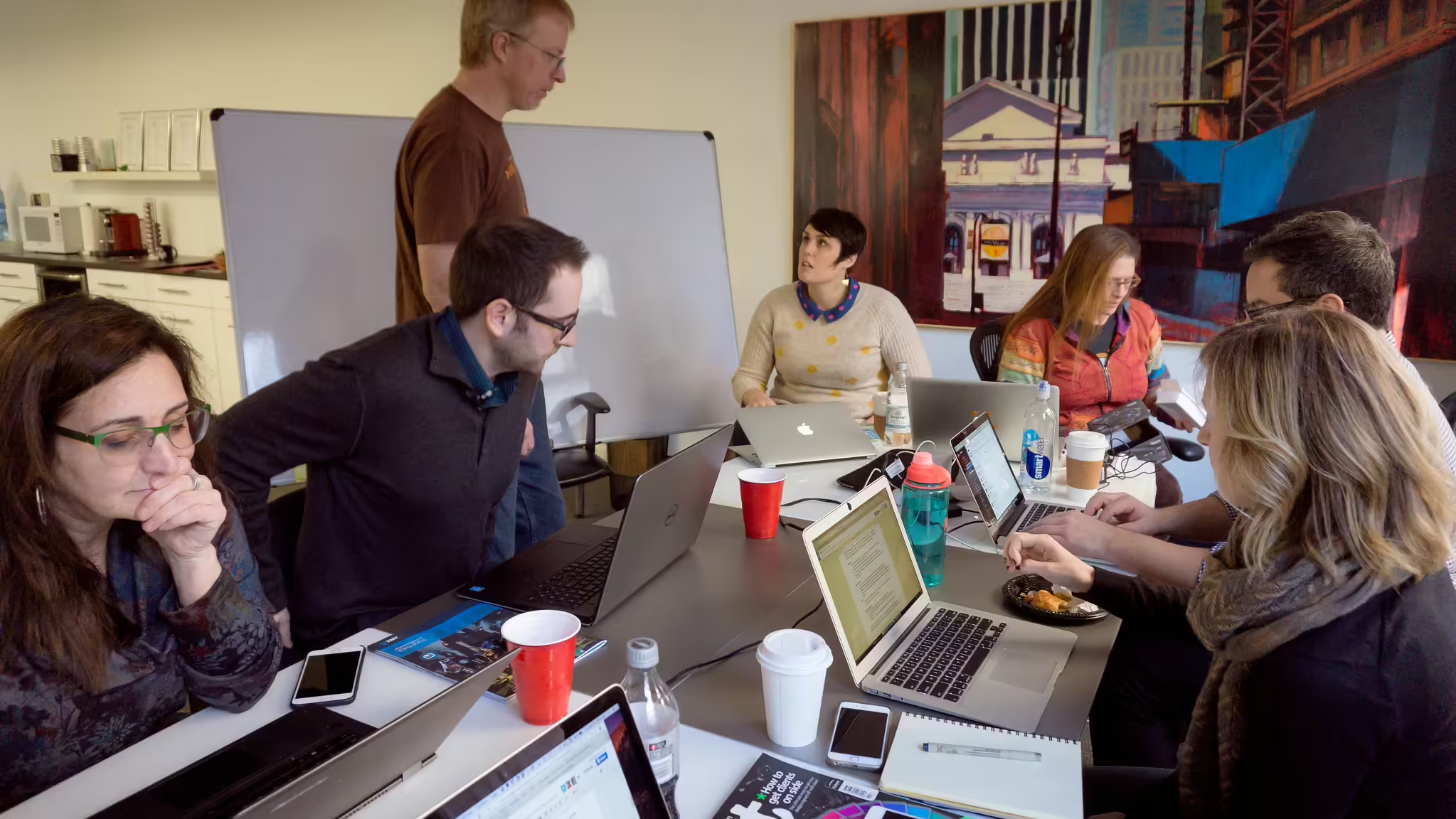Scaled Agile Framework (SAFe) Solutions

“Think: The safe way is the best way” by 4nitsirk is licensed under CC BY-SA 2.0 .
Ever wonder how organizations accomplish large-scale projects, with multiple teams and stakeholders? The answer is often Scaled Agile Framework® (SAFe®), a set of organizational and workflow patterns for implementing agile practices at an enterprise scale.
What Is SAFe?
SAFe® is a framework that helps to scale lean/agile practices, making it ideal for larger organizations. The framework provides structured guidance on roles and responsibilities, along with how to assign value to work to ensure proper planning and management. In other words, SAFe® provides a structured approach for scaling Agile methodologies.
Scaled Agile Framework® was designed around Agile software development, lean product development, and systems thinking, in order to draw multiple arms of an organization into the process of executing large-scale changes.
Studies have shown that this combination of lean, agile, and DevOps thinking has led to a:
- 35% increase in productivity.
- 50% improvement in quality.
- 50% faster time-to-market.
- 30% increase in employee engagement and job satisfaction.
As certified experts with years of experience employing SAFe® for enterprise-level customers, we at Lone Rock Point highly recommend using this framework for sustainable growth.
Who Benefits From SAFe?
SAFe® is scalable to the enterprise level, making it ideal for large-scale projects within virtually any size of organization. We’ve used SAFe® to help NASA, among others, and many of our enterprise-level customers use our services as certified SAFe® experts for content migration and market expansion projects.
SAFe Core Values
Core values drive company culture, which leadership must foster and within which employees can most effectively implement the framework.
The SAFe® core values are:
- Alignment: Synchronizing all levels of business in planning ensures that information flows both upward and downward, and all personnel feel invested in the success of the business.
- Built-in Quality: The definition of “done” includes quality assurance and is set by every team in the organization, for every task and project.
- Transparency: Trust-building behavior is encouraged, including planning work in smaller batch sizes. This helps to surface problems sooner and provide real-time feedback on backlogs or areas of concern.
- Program Execution: Quality work is delivered on a regular basis.
- Leadership: Lean/agile leadership is required within the organization, because leaders have the ability to change the environment in order to ensure the core values are executed system-wide.
These work in harmony so that any mid-project changes in scale or execution can be easily adapted to. The system is designed with the agility to maneuver around road blocks and priority shifts.
The SAFe® framework is designed to improve the business as a whole, by inspiring everyone in the organization to be included in lean/agile decision making. The method becomes self-reinforcing, making this less of a set of rules to follow and more of a cultural shift that supports unified growth.
Nine Key Principles of SAFe
Included in SAFE®’s core values are nine key principles, intended to influence the decision-making approach of all individuals within the organization. These are as follows:
- Take an economic view. Sequencing jobs for maximum benefit, understanding economic trade-offs, and operating within lean budgets are responsibilities that are shared throughout the organization.
- Apply systems thinking. Team members have a high-level perspective on how their part fits into the system as a whole.
- Assume variability and preserve options. Retain multiple requirements and design options for a longer period in the development cycle, in order to provide options and identified outcomes during times of uncertainty.
- Build incrementally with fast, integrated learning cycles. The whole system must be considered when assessing the feasibility of the current design choices.
- Base milestones on objective evaluation of working systems. A demonstration of an actual working system provides the best basis for decision making.
- Visualize and limit work-in-progress, reduce batch sizes, and manage queue lengths. Focused work enables stakeholders to more easily see how the project is playing out.
- Apply cadence and synchronize with cross-domain planning. Cadence inspires collaboration and reduces uncertainty. Learned information informs decision making and planning.
- Unlock the intrinsic motivation of knowledge workers. Leadership coaches and serves their teams, rather than commanding and controlling them.
- Decentralize decision making. Teams have the necessary autonomy to get work done.
By operating from a big-picture perspective of every individual being a necessary part of the system, the enterprise can clearly define value streams across organizational boundaries. The company culture becomes one of autonomy in work but unification in delivery points, timelines, work value, and project completion.
How SAFe Works
By employing SAFe®, organizations build the muscle memory and mindset of the core competencies that drive success. This includes iterating quickly, releasing often, learning continuously, minimizing wasted effort, and making smart decisions on what to build next.
Key Roles in SAFe
Although this framework takes a democratic approach, there are key roles that ensure various workflows are accomplished.
Key SAFe® roles include:
- Product Manager: This may be an individual or a group within an Agile team, and is responsible for defining viable, sustainable solutions that meet customer needs and support development across the product lifecycle.
- Release Train Engineer (RTE): In addition to running Program Implement (PI) planning sessions during Agile Release Trains (ARTs), the RTE drives communication with stakeholders, escalates roadblocks, and helps manage risk.
- Customer: The ultimate beneficiary of the whole-product solution developed by the organization.
- Business Owner: These are critical stakeholders who have the primary business and technical responsibility for return on investment (ROI), governance, and compliance. They actively participate in ARTs and solution development.
- System Architect/Engineer: Responsible for defining and communicating a shared technical vision for the solutions developed by an ART, this role ensures the solution under development fits its intended purpose.
Leaders may help teams with coaching and skills development, but transformation to a lean/agile way of working doesn’t relieve management of their ultimate responsibilities. They remain accountable for the organization’s growth and its people, operational excellence, and business outcomes.
Employing Program Increment Planning
Program Increment (PI) planning is a cadence-based event that’s essential to SAFe®. It’s the time during which ART continuously delivers value to the customer.
Each PI begins with a planning event, during which Agile teams estimate how much work they can deliver in the next PI. All relevant stakeholders attend PI planning, which is facilitated by the RTE.
The primary goals of the meeting are to align ART and stakeholders to a shared business mission, and gain commitment to the upcoming PI. PI planning underscores the SAFe® culture by uniting different teams in the understanding of and commitment to a shared solution vision. We’ll discuss PI planning in more detail in a future article.

How SAFe Differs From Other Frameworks
SAFe vs. Agile
Although SAFe® employs several of the Agile manifesto principles as part of its approach, the two are distinctly different, primarily with regard to scalability. Agile is designed for smaller teams with limited leadership. SAFe® is designed to scale indefinitely and be implemented across an enterprise-level organization.
SAFe vs. Scrum at Scale
In Scrum at Scale (S@S), basic Scrum roles and events are linearly scaled without introducing new process dynamics. Everyone is considered a part of an interchangeable Scrum team, with an autonomous Scrum Master at the lead.
The primary differences are that S@S is less prescriptive than SAFe®, and focuses on the question of whether adding more people will increase performance, or negatively affect productivity. SAFe® is less concerned with this question, and focuses more on a culture in which scalability is ensured through a more democratic approach to design.
SAFe vs. Large-Scale Scrum
Large-Scale Scrum (LeSS) takes a minimalist approach, offering only two configurations to accommodate teams of greater size, and with increasingly complex solutions, whereas SAFe® offers four.
Although they both focus on a lean approach, LeSS is customer-focused when it comes to strategy, whereas SAFe® incorporates multiple considerations.
The biggest difference, however, is that LeSS dictates that product owners have complete content authority and strategic influence, whereas SAFe® is far more democratic.
Get Started With SAFe
Lone Rock Point has SAFe certified resources and employs SAFe methodologies in our enterprise engagements. If you’d like to employ the Scaled Agile Framework® within your organization, contact us for further information.
Simplified Summary
The Scaled Agile Framework (SAFe) helps big companies manage large projects by using Agile methods. It gives clear rules about roles, responsibilities, and how to plan and organize work. SAFe was designed to spread Agile and lean ideas across the whole organization, making it easier for teams to work together on big projects. SAFe works well for large businesses and has been used by groups like NASA. Some important values in SAFe are alignment, quality, transparency, and program execution. These values help teams stay organized, focused, and flexible as projects change.


